Refund Guaranteed
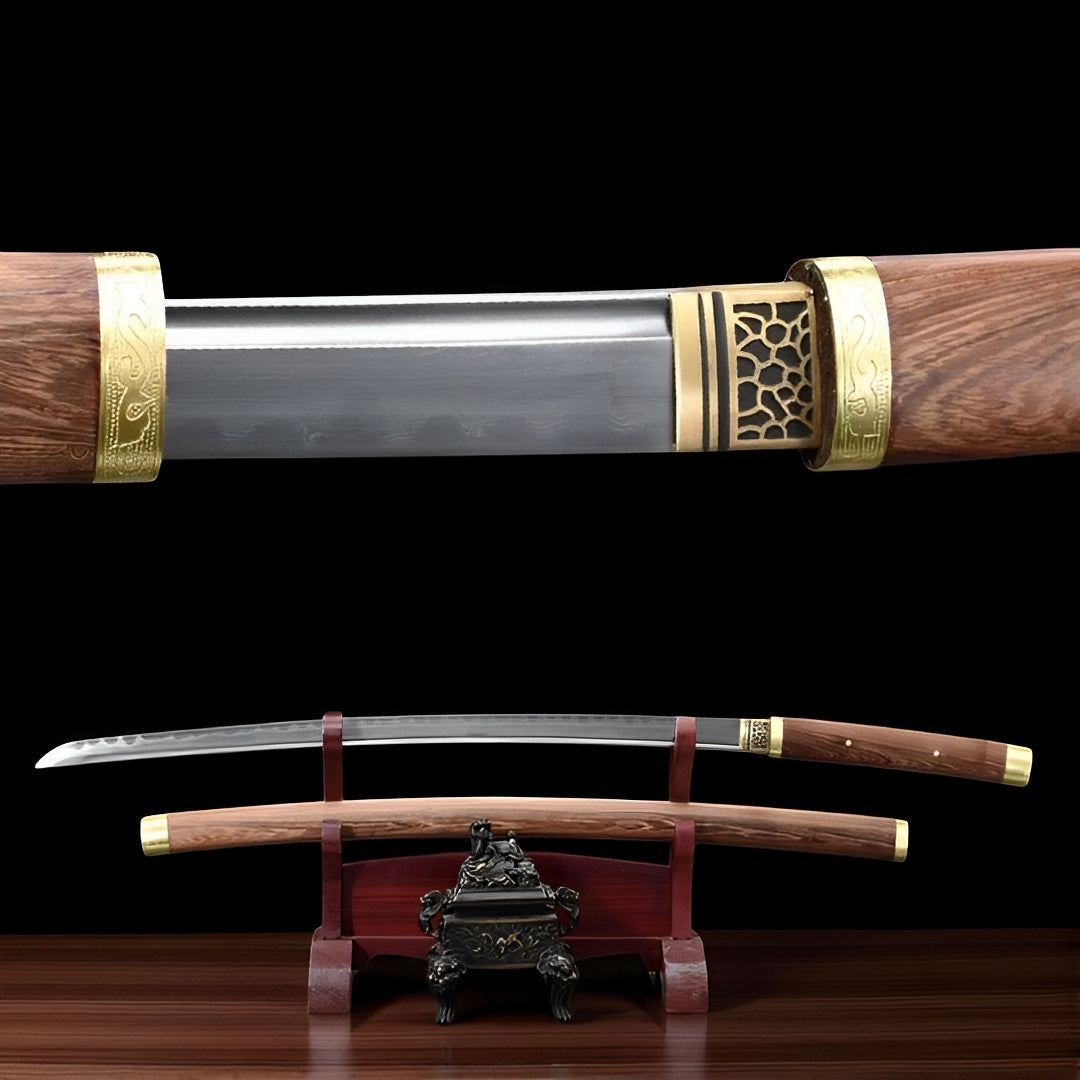
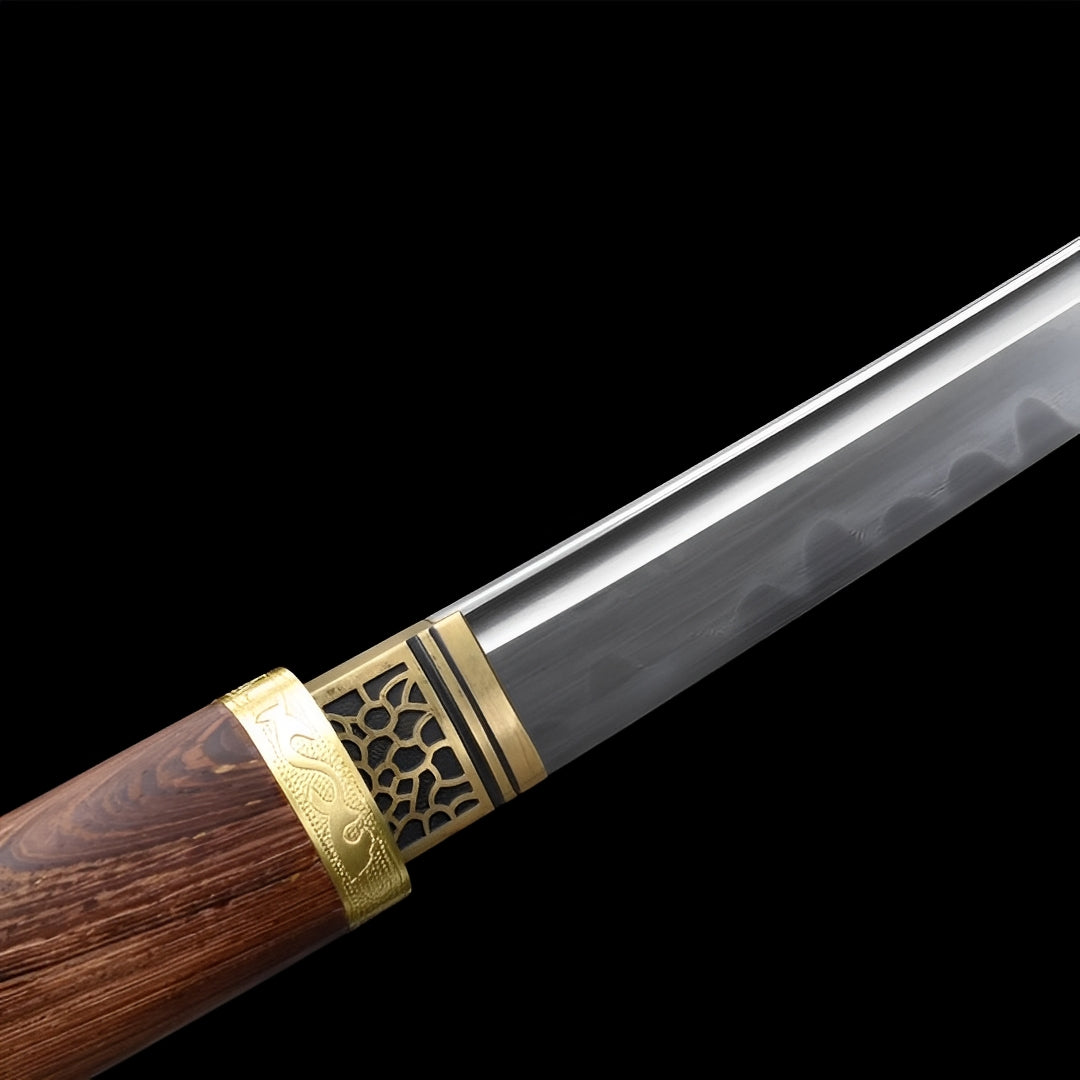
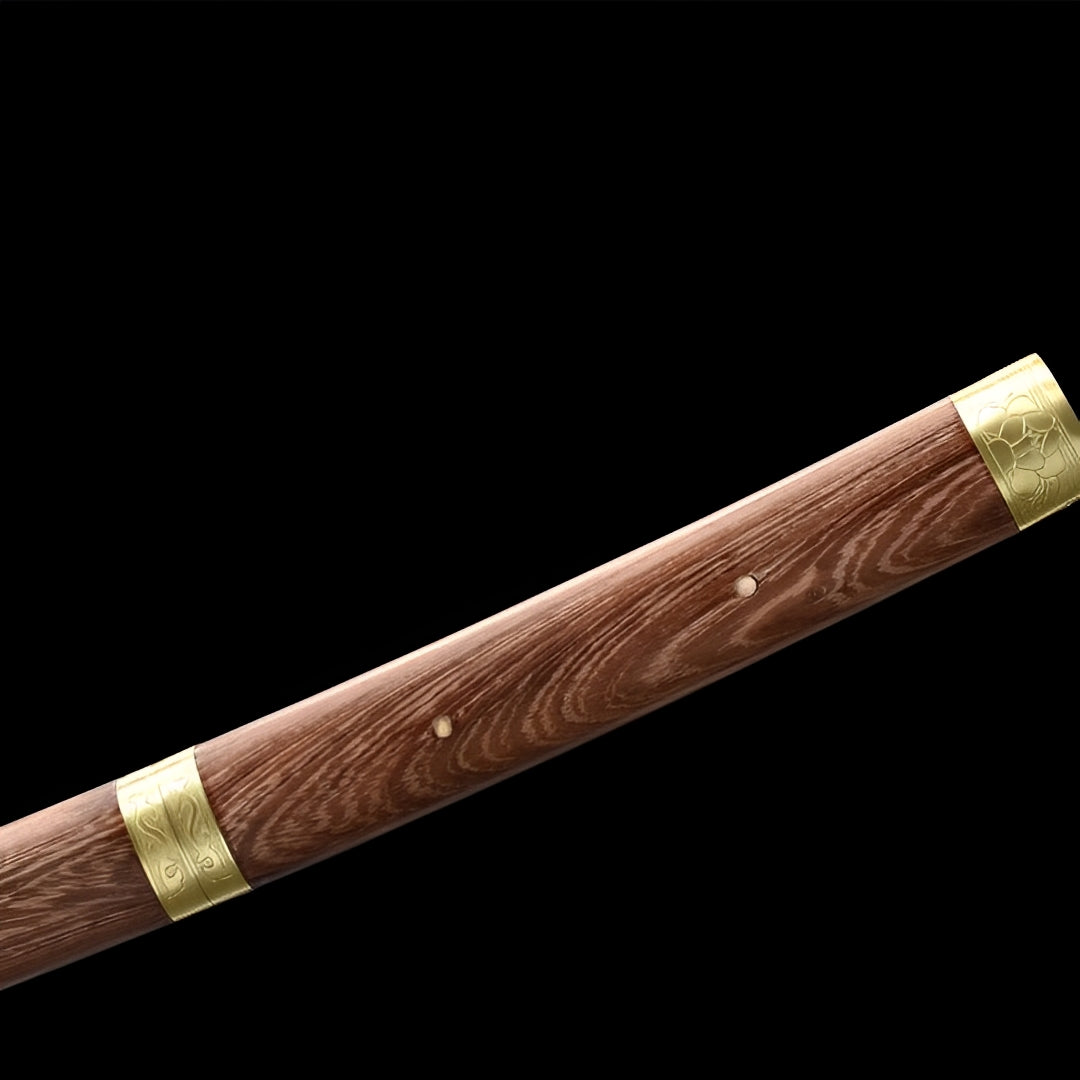

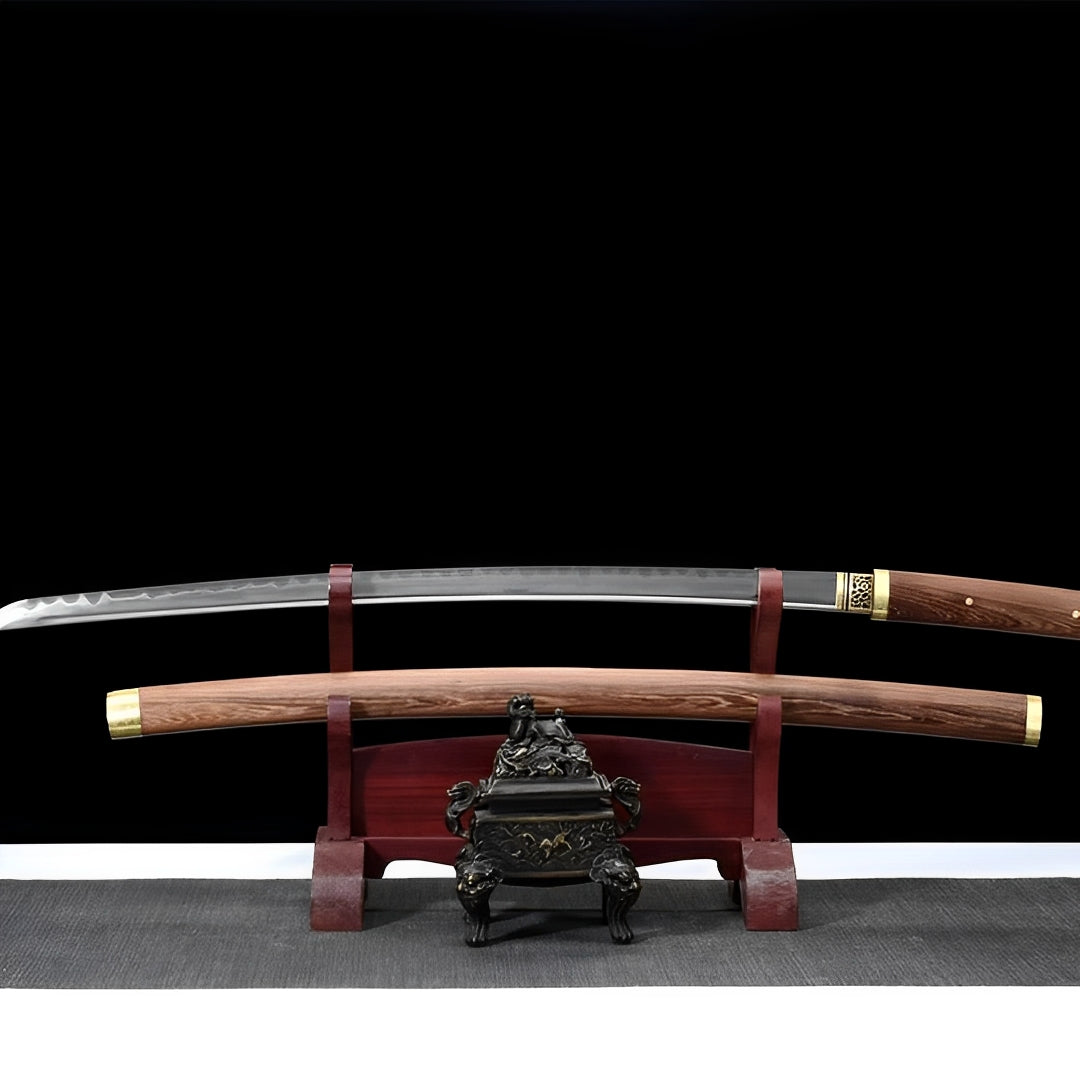

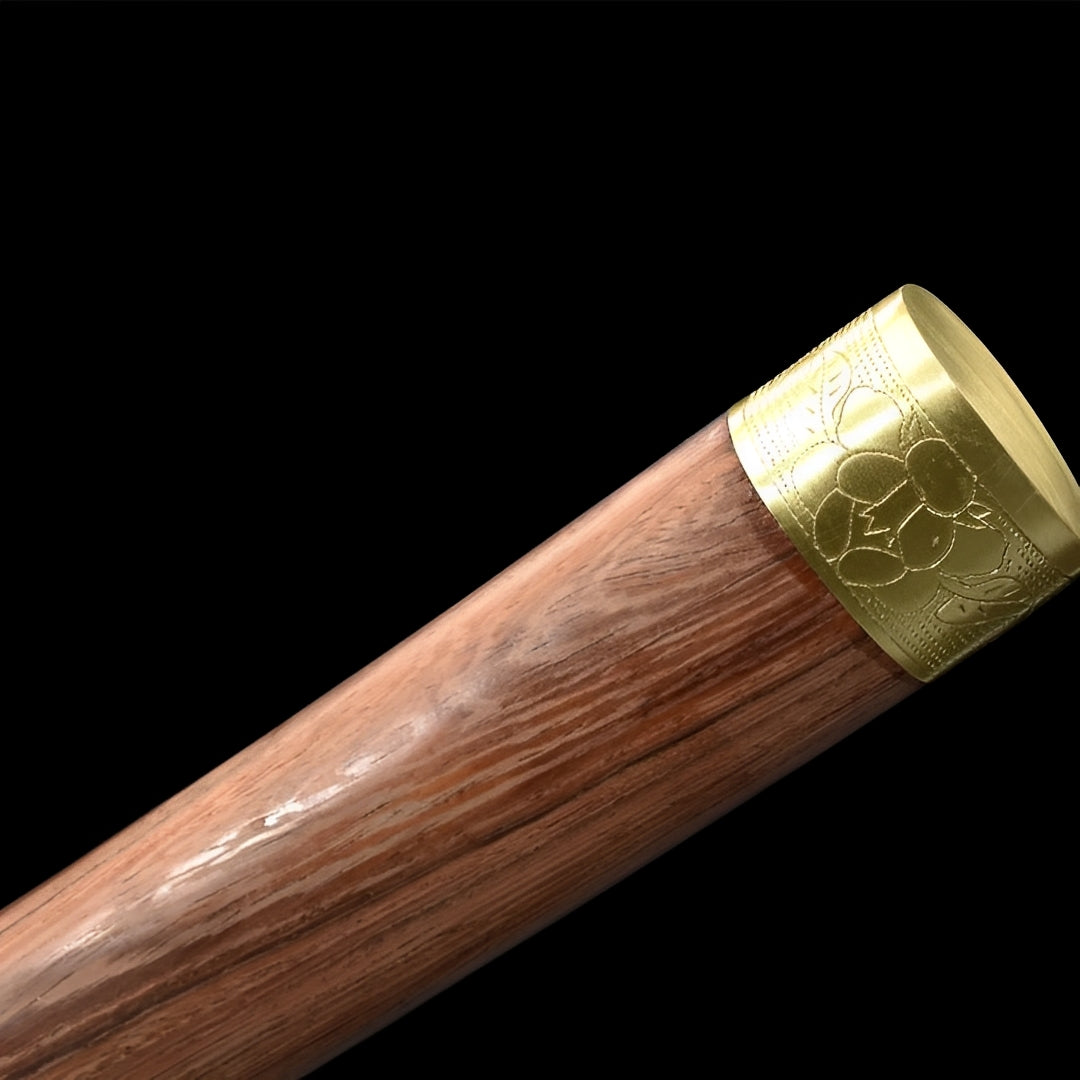
Why choose us
Ships within 48/72h
Forged Blade
Collector Quality
Trusted Globally
Inspired by Japan
Wooden Katana Sword - 木製の
Included with your order



Note: Engraving placement and orientation may vary by blade model (hamon, geometry, and flat area).
Free Shipping over $250
No Bots, No AI
Refund Guaranteed
Free Shipping over $250
No Bots, No AI
Our team is here to help with any questions or concerns.
We’re always happy to assist you — don’t hesitate to reach out.
Why choose us
Ships within 48/72h
Forged Blade
Collector Quality
Trusted Globally
Inspired by Japan

Wooden Katana Sword - 木製の
Specifications
- Handmade
- SHARP
- Blade: 1060 Carbon Steel
- Brass Habaki
- Full Tang
- Total size: 105cm / 41 (in)
- Blade size: 72cm / 28 (in)
- Blade width: 3,2cm / 1.2 (in)
- Blade thickness: 0,7cm / 0.27 (in)
- Handle size: 30cm / 11.8 (in)
Wooden Katana Sword - Living Grain Artisan Masterpiece
Embrace nature's elegance with the Wooden Katana, where steel yields to artisan craftsmanship celebrating organic beauty. This masterful traditional sword refuses modern excess - rich walnut grain flowing across saya like river currents, golden filigree creating jewelry-box delicacy without overwhelming wood's natural majesty, the entire piece demonstrating that swords can be sculpture as much as weapon. Not replica of fictional blade but homage to joinery masters whose skills transformed raw timber into heirlooms surviving centuries, asking whether synthetic perfection beats natural imperfection's honest soul.
Wabi-Sabi Living Material
Japanese wabi-sabi philosophy finds beauty in imperfection, impermanence, incompleteness - exactly what natural wood embodies. Unlike lacquered surfaces hiding material beneath paint, this natural grain blade celebrates wood's honest character: knots become features rather than flaws, grain patterns create unique fingerprints impossible replicating, color variations document the tree's life story written in growth rings.
Traditional Japanese carpentry elevated woodworking to spiritual practice. Master craftsmen spent lifetimes perfecting joints requiring no nails or glue, selecting timber based on grain direction and character, understanding that wood remains alive even after cutting - breathing, expanding with humidity, contracting when dry, aging gracefully through decades if treated respectfully.
This living material sword embodies that philosophy. The walnut saya isn't static object but dynamic entity continuing its transformation through years. Initial honey tones will deepen to darker chocolate as oils from handling penetrate grain. Natural patina will develop where hands touch most frequently. The wood earns character through use rather than degrading through wear.
Western manufacturing often fights materials' nature, forcing conformity through processing. Japanese craftsmanship works with materials' inherent properties, celebrating what makes each piece unique. That philosophical difference separates mass production from artisan creation - the former treats materials as obstacles overcoming; the latter treats materials as collaborators respecting.
Museum curators recognize natural-finish pieces as requiring different preservation approaches than painted objects. Wood responds to environment, requiring climate control preventing cracking, UV filtering preventing fading, regular maintenance ensuring longevity. That demanding stewardship creates different ownership relationship than set-and-forget synthetic pieces.
Golden Filigree Restraint
The brass accents featuring delicate scrollwork patterns demonstrate jewelry-level metalworking applied to sword fittings. These intricate designs - possibly floral motifs, geometric arabesques, or stylized nature patterns - catch light beautifully while maintaining restraint preventing overwhelm of the wood's natural beauty.
Traditional Japanese metalworkers called kinko-shi (金工師) spent years mastering techniques creating these elaborate fittings. Each line, curve, negative space received individual attention, the craftsmanship visible only upon close examination rewarding those who look carefully. This artisan metalwork blade carries that tradition forward, proving contemporary craftsmen maintain those demanding standards.
The golden color specifically creates warm harmony with walnut's honey-brown tones. Color theory teaches that adjacent warm hues create cohesion while maintaining distinction - the gold glows against wood without fighting for dominance, each element enhancing rather than competing with the other.
The filigree patterns also serve structural function - the openwork reduces weight without sacrificing strength, demonstrating that functional requirements can produce aesthetic beauty when approached thoughtfully. Form following function creates elegance that pure decoration rarely achieves.
Quality metalwork develops patina beautifully, the bright gold mellowing to soft antique finish over years. Combined with wood's natural aging, the maturing masterpiece becomes more distinguished through time rather than appearing worn or tired - the opposite of most manufactured goods depreciating from day one.
Historical Authenticity
Before modern materials enabled cheap mass production, quality swords featured extensive woodwork. Saya (scabbards) came from carefully selected timber split lengthwise, hollowed to fit blade precisely, rejoined using traditional joinery invisible from exterior. Handle cores used hardwood providing strength, wrapping secured through time-tested methods requiring no adhesives.
This traditional construction blade honors those historical techniques. Rather than plastic shells painted resembling wood, genuine timber construction means this sword could theoretically function as its historical predecessors did - the materials, joinery, proportions all following principles refined across centuries of Japanese sword craft.
The visible wood grain also connects to samurai aesthetics valuing natural materials. While some periods favored elaborate lacquerwork, others celebrated shirasaya (white scabbard) style featuring unfinished wood showcasing material quality and joinery skill. This katana continues that tradition of letting materials speak for themselves.
Historical enthusiasts recognize that understanding traditional swords requires handling pieces constructed traditionally. Plastic replicas teach nothing about wood's weight, balance, how grip feels during draw, temperature differences between materials. The educational piece wooden construction provides authentic experience unavailable through modern shortcuts.
Conservation scientists studying historical swords often examine wood components for dating, origin determination, understanding historical craftsmanship. Owning traditional-construction replica therefore connects collectors to broader historical preservation conversation, bridging casual hobby with serious academic study.
Sustainable Elegance
Modern collecting increasingly considers environmental impact. Plastic swords derived from petroleum require energy-intensive manufacturing, resist biodegrading, accumulate as waste. Wood - especially walnut from managed forests - offers renewable alternative: trees regrow, wood eventually biodegrades, traditional joinery eliminates toxic adhesives.
This eco-conscious collector blade appeals to environmentally aware sword enthusiasts wanting collections reflecting values beyond mere acquisition. Each purchase becomes vote supporting sustainable practices, traditional craftsmanship, materials chosen for renewability rather than cheapness.
Walnut specifically offers excellent sustainability profile - fast-growing tree, wood workable without extreme processing, beautiful appearance eliminating need for surface treatments. The choice demonstrates that environmental responsibility and aesthetic excellence aren't opposed but aligned when approached thoughtfully.
The longevity factor matters too. Cheap plastic swords break, discard, replace - endless cycle of waste. Quality wooden sword maintained properly lasts generations, becoming heirloom passing through families. That generational thinking shifts collecting from consumption to stewardship, from ownership to caretaking.
Young collectors especially respond to sustainability messaging, wanting hobbies aligning with environmental consciousness. The legacy heirloom piece wooden construction provides that alignment, proving you can collect responsibly while building museum-quality collection.
Artisan Collection Statement
This craftsmanship celebration blade serves different collecting philosophy than character replicas or gaming weapons. It announces: "I appreciate swords themselves - the artistry, materials, techniques - independent from franchise associations." That positions owner as serious collector rather than casual fan.
Interior designers welcome natural wood elements far more readily than brightly colored anime swords. The walnut-and-gold aesthetic works in spaces demanding sophistication - home libraries, executive offices, traditional rooms where weapons must justify presence through beauty rather than fandom signaling.
Photography for collection documentation benefits from natural materials' richness. The wood grain provides organic texture, golden accents create light-catching focal points, the overall piece photographs as art object rather than toy replica. That elevation matters for collectors treating hobby seriously.
Investment considerations favor quality natural-material pieces over mass-produced plastic. Traditional construction requires skilled labor commanding fair wages, sustainable materials cost more than petroleum-derived alternatives, proper joinery takes time - all factors creating authentic value supporting appropriate pricing.
The museum-grade display piece positioning attracts collectors building lifetime collections rather than accumulating temporary possessions. This isn't sword you'll outgrow when moving to next fandom; it's permanent fixture earning place through timeless beauty transcending temporary enthusiasms.
Care Instructions: Treat this living wood with respect befitting natural material's requirements. Wipe clean with barely-damp cloth - never soak, never use harsh chemicals. Apply quality wood oil quarterly preventing drying, especially in climate-controlled environments. Avoid direct sunlight causing fading and cracking. Handle with understanding that wood continues changing through years - that evolution isn't degradation but maturation, the sword becoming more distinguished as you age alongside it. Polish golden fittings gently preserving delicate filigree. Display where stable temperature and moderate humidity let the wood breathe naturally.
Steel fades. Paint chips. Plastic cracks. Wood endures, gaining character through centuries.
Legal Disclaimer
By purchasing from Katana Corp, you acknowledge and agree that:
- You are at least 18 years of age (or the age of majority in your jurisdiction).
- You are solely responsible for verifying and complying with all local laws and import regulations before placing an order.
- Some countries prohibit the importation of swords entirely. Katana Corp is not responsible for orders delayed, seized, or refused by customs authorities.
- All katanas and related products are sold strictly as decorative and display items. They are not intended or certified for combat use.
- Depending on the jurisdiction, swords may legally be considered bladed weapons, subject to specific restrictions or prohibitions.
- Katana Corp disclaims all liability for any injury, damage, or legal consequences resulting from misuse, abuse, or unlawful use of its products.
For full details, please refer to our Terms of Service.
Care & Maintenance
To maintain your katana's appearance and performance over time, we recommend:
- Regularly wiping the blade with a soft cloth to remove fingerprints and moisture.
- Applying a light coat of choji oil to prevent rust (for carbon steel blades).
- Storing the sword in a dry place, preferably inside its saya.
- Avoiding direct contact with hard surfaces to preserve sharpness and finish.
For more care tips, check our full maintenance guide in the FAQ section.
Behind the Blade
Every katana we offer carries the essence of centuries-old craftsmanship.
More than just a weapon, the katana symbolizes discipline, honor, and mastery.
Our artisans draw inspiration from traditional forging methods to ensure each blade reflects the spirit of the samurai — strength, precision, and soul.
Owning one is not just about aesthetics — it’s about carrying a piece of that legacy.
User Experience
This katana is designed to offer a perfect balance between blade and handle.
Its ergonomic tsuka (handle) allows a secure two-handed grip, while the weight distribution ensures smooth, fluid movement.
Whether for training, display or cutting practice, handling feels natural and precise.

The Art of Traditional Forging
Each katana we craft is born from centuries of samurai tradition.
Our master smiths shape every blade by hand, folding the steel to achieve unmatched strength, flexibility, and beauty.
This time-honored process is not just about creating a weapon? it’s about preserving a legacy of discipline, honor, and artistry.

Materials Chosen Without Compromise
We select only the highest-grade steels and authentic fittings to ensure every katana is both a masterpiece and a reliable companion.
From the flawless hamon line to the perfectly balanced tang, each detail is carefully inspected to meet the highest standards of performance and aesthetics.
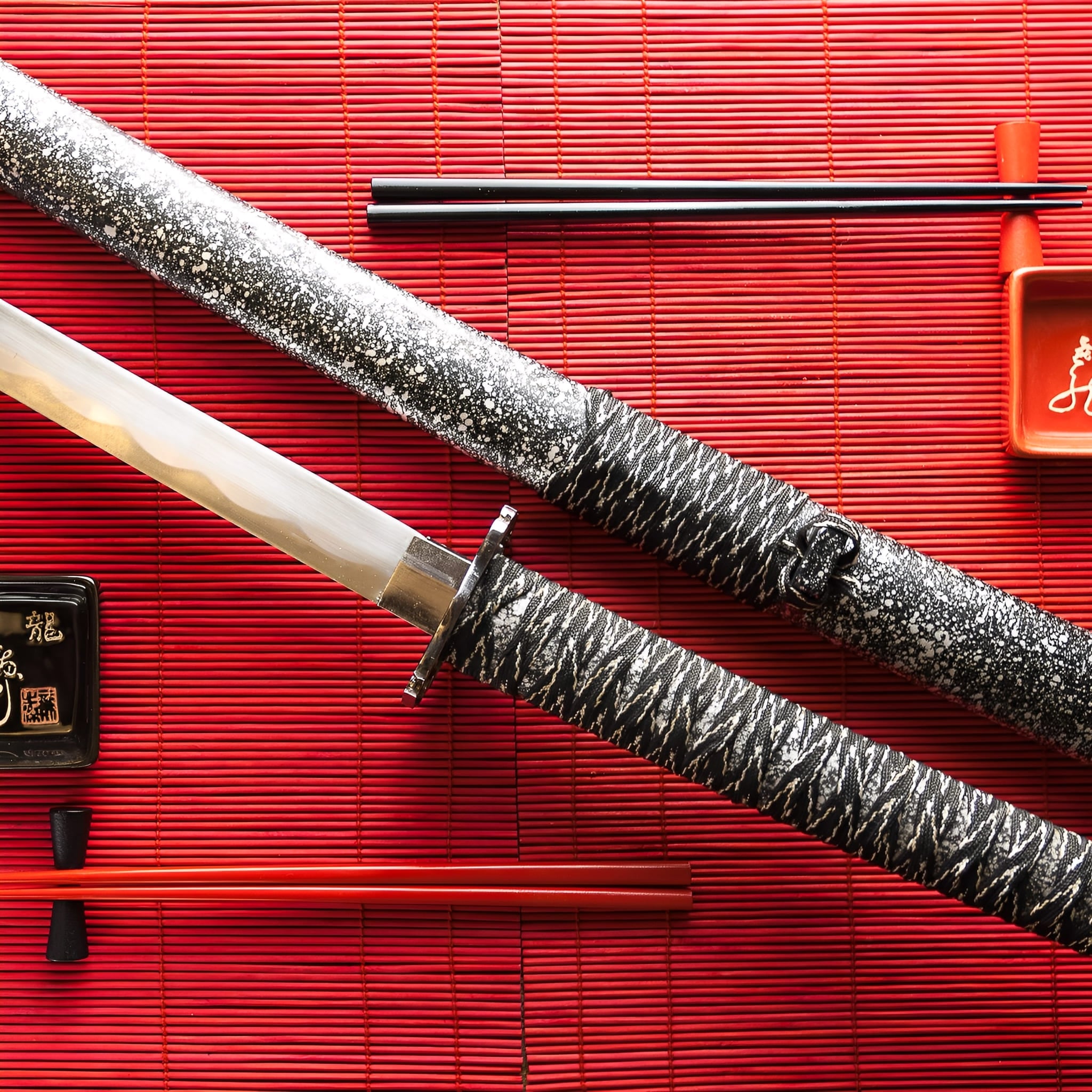
More Than a Sword, A Lifelong Legacy
Owning a handmade katana is an experience that goes beyond the blade itself. It’s holding history, tradition, and craftsmanship in your hands.
Whether displayed as a work of art or wielded with precision, your katana will stand as a symbol of timeless skill and dedication for generations to come.
-
Key Destinations
United States: 5–7 days
Canada: 5–7 days
Australia: 6–9 days
Denmark: 4–6 days
Netherlands: 3–5 days
Sweden: 4–6 days
Switzerland: 3–5 days
Finland: 5–7 days
Singapore: 6–8 days -
Central European Partners
France: 2–3 days
Germany: 3–5 days
Spain: 4–6 days
Italy: 4–6 days
Belgium: 3–5 days
Austria: 4–6 days
Ireland: 4–6 days
Poland: 4–6 days
Portugal: 4–6 days -
Extended EU Network
Czechia: 4–6 days
Hungary: 4–6 days
Slovakia: 4–6 days
Slovenia: 5–7 days
Romania: 5–7 days
Bulgaria: 5–7 days
Croatia: 5–7 days
Serbia: 5–7 days
Estonia: 5–7 days
Latvia: 5–7 days
Lithuania: 5–7 days
Luxembourg: 3–5 days
Greece: 5–8 days -
FAQ’s
Visit our FAQs page to find answers to common questions.